![]()
Introduction: English
In Austria, there are local and regional variations in baking. Home baking is quite popular. Sweet baking in Austria was influenced by other cultures: Bohemia golatschen, Hungary strudel and Italy polentaschnitten. Different words are used to refer to bread brot, white bread and rolls weißgebäck and konditorwaren are more luxurious bakery goods. The sachertorte name is protected, but many households have their own similar chocolate torte recipe. Linzertorte is a regional speciality, which is known in all of Austria.
Introduction: Austrian German
In Österreich gibt es lokale und regionale Unteschiede beim Backen und Backen zu Hause ist sehr beliebt. Viele anderen Kulturen haben das Backen in Österreich beeinflusst: Böhmen (Golatschen), Ungarn (Strudel) oder Italien (Polentaschnitten). Verschiedene Wörter werden verwendet um zwischen Brot, Weißbrot und Brötchen (Weißgebäck, Semmeln) und Kuchen (Konditorwaren, Mehlspeisen) zu unterscheiden. Der Name der Sachertorte ist geschützt, aber viele Haushalte haben ihr eigenes ähnliches Schokoladentortenrezept. Linzertorte ist eine regionale Spezialität, die in ganz Österreich bekannt ist.
At the bakery
-Gruß Gott.
-Guten Tag. Drei Stück Apfelstrudel bitte, zum mitnehmen.
-Bitteschön. Darf es soustnoch was sein?
-Nein Danke. Das ist alles.
-Auf Wiederschauen.
-Auf Wiedersehen.
Translation
-Hello.
-Hello. Could I have three slices of apple strudel to take away please?
-Here you are. Would you like anything else?
-No thank you. That’s it.
-Goodbye!
-Goodbye.
Image: © Beverley Daley-Yates
Austrian German
Wenn ich in Österreich in die Bäckerei gehe, kaufe ich meistens verschiedene kleine Backwaren.
Der Grund ist einfach der, dass die Auswahl so groß ist und ich die unterschiedlichen Konsistenzen von weich bis knusprig und Geschmacksrichtungen von süß bis deftig auskosten möchte.
English
When I go to a bakery in Austria, I often buy many different small items. The reason is simply that the selection is abundant and I like trying the different textures – from soft to crunchy, and the range of different tastes – from sweet to savoury.
Image: © Uschi Stickler
Das Schwarzbrot
Schwarzbrotor bauernbrot is the wholesome dark rye bread, traditionally baked in wood-fired ovens on Austrian farms.
Bauernbrot, literally translated as farmer's bread, is the most traditional type of Austrian bread. It used to be baked for one's own consumption, and kept for months. Now it’s sold locally and the similar bread, schwarzbrot, is sold in bakeries.
Image: © Uschi Stickler
Der Bosniak(en)
Bosniak(en) is a savoury roll made with a mix of rye and wheat dough, topped with caraway seeds.
Image: © Uschi Stickler
Das Kipferl
Kipferl, a crescent-shaped pastry, is the origin of the French croissant. As the centre of political power in Europe for centuries, Vienna boasts a unique cuisine.
In 1839, August Zang visited Paris and set up the first Boulangerie Viennoise, Viennese bakery, in France, introducing Parisians to the crescent-shaped kipferl.
Image: Hutschi under Creative Commons license
Das Mohnweckerl
Mohnweckerl is a small, soft white roll topped with poppy seeds.
Image: © Beverley Daley-Yates
Die Semmel
Semmel or kaisersemmel are typical soft white bread rolls with five-leaved star-shapes on top, found on dining tables across Austria at breakfast, lunch and dinner.
Image: © Beverley Daley-Yates
Der Apfelstrudel
One of the best known Austrian cakes is apfelstrudel. Strudel can be made with other fillings, sweet or savoury. Apfelstrudel is a classic Austrian layered pastry filled with sliced apples, raisins, cinnamon and sugar. It's served as slices, warm or cold, sprinkled with sugar and cream. Preparing strudel pastry requires skill and practice. The pastry chef kneads, rests, rolls and stretches the unleavened dough until it's paper-thin.
Image: BernieCB under Creative Commons license
Der Gugelhupf
Gugelhupf is a traditional large cake baked in a special ring-shaped tin. It's generally eaten in the afternoon with coffee. Originating in Vienna, gugelhupf is popular throughout Austria and Germany. There are many variations on the traditional recipe today like marmorgugelhupf and reindling. The shape is the common ingredient.
Image: Ponte1112 under Creative Commons license
Die Nusspotizen
Nusspotizen or mohnpotizen are types of strudel made with yeast-based dough and filled with a mix of ground nuts, raisins and sugar or poppy seeds, raisins and sugar.
Die Kekse
Kekse are small, sweet biscuits of various tastes and shapes, traditionally served during Advent, before Christmas.
Image: © Uschi Stickler
Die Topfengolatsche
Topfengolatsche is a traditional Austrian cake, very popular in Vienna. It's made with sweet yeast dough, filled with sweet curd cheese and baked as a closed square pocket. Variations are made with puff pastry and other fillings such as apples and apricots.
Image: nerdycreative under Creative Commons license
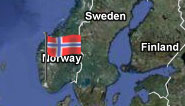
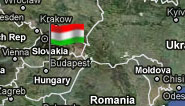
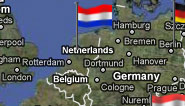
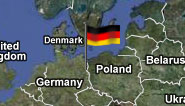
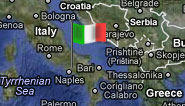
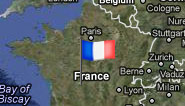
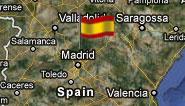
Rate and Review
Rate this activity
Review this activity
Log into OpenLearn to leave reviews and join in the conversation.
Activity reviews